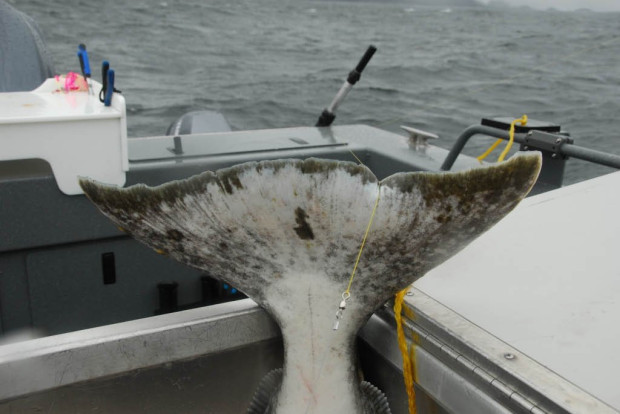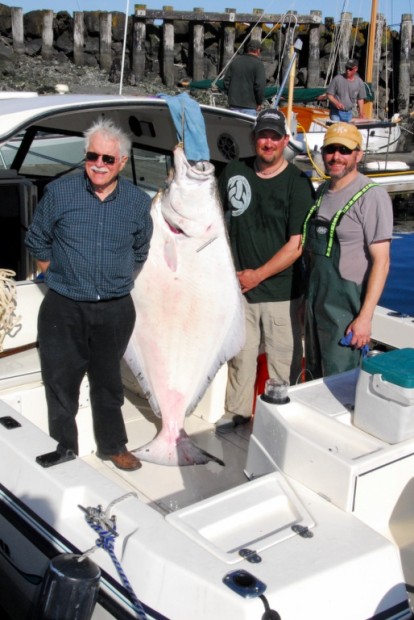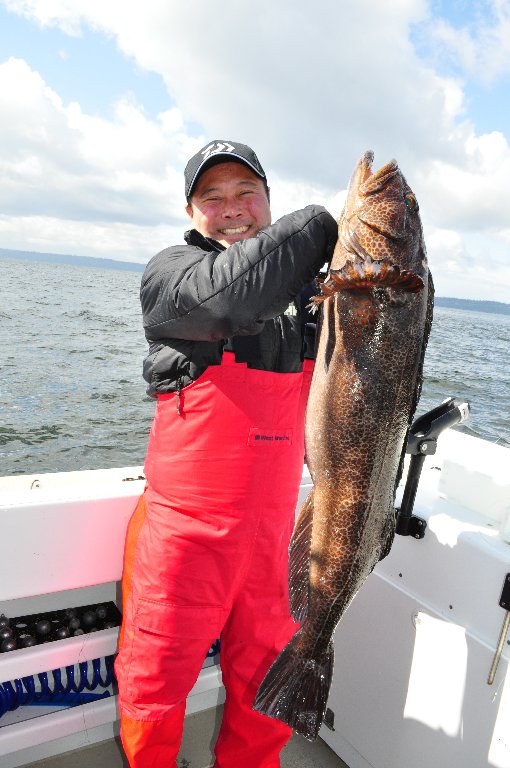Halibut fisheries remain stable and proposed number of fishing days increase along with an earlier start in spring of 2020 Leave a reply

The sport halibut seasons in Washington’s marine areas have seen a more stabilized fishery in recent years, and flattie fish chasers can now start making plans for the 2020 spring season.
Preliminary sport-fishing dates were recently proposed by the Washington Department of Fish and Wildlife (WDFW) and Pacific Fishery Management Council (PFMC) at a Nov. 15-20 meeting in Coast Mesa, CA.
“In Area 2A (Washington, Oregon and California) we’ve moved in a new direction that started in 2019 through 2022 where quotas will remain status quo barring any unforeseen issues,” said Heather Hall, a Washington Department of Fish and Wildlife (WDFW) fish policy coordinator. “We’ve added a lot more days of fishing up front in 2020 compared to last year. It helps knowing that we have the catch quota available (there was 39,000 pounds leftover in 2019 Puget Sound fisheries) and how our fisheries did last year.”
In past seasons, the sport halibut fishery would open in early May, but in 2020 the proposal is to open the eastern Strait of Juan de Fuca and Puget Sound (Marine Catch Areas 6 to 10) on April 16.
The eastern Strait and Puget Sound will be open Thursdays, Fridays and Saturdays from April 16 to May 16 and May 28 to June 27; and Memorial Day weekend on May 22-24. Fishing will be closed on May 21.
The western Strait of Juan de Fuca (Area 5) will be open Thursdays and Saturdays from April 30 to May 16; Memorial Day weekend on May 22-24; and Thursdays, Fridays and Saturdays from May 16 to June 28.
The northern coast off Neah Bay and La Push (Areas 3 and 4) will be open Thursdays and Saturdays from April 30 to May 16 and May 28 to June 27; and Memorial Day weekend on May 22 and 24. Fishing will be closed on May 21 and May 23.
The southern coast off Westport and Ilwaco (Areas 1 and 2) will be open Thursdays and Sundays from April 30 to May 17 and May 28 to June 28; and May 21 only during Memorial Day weekend.

Fishing could close sooner than dates noted and/or additional fishing dates could also be added to an area if their sport catch quotas aren’t achieved.
Hall noted the dates for Area 5 in the western Strait were slightly changed from the original proposal as a concern was raised by WDFW enforcement relative to the difference in season days of the week between Areas 4B and 5.
She pointed out there has been an increasing crossover of angler effort between both areas, whereby anglers are launching and returning to Neah Bay, but fishing Area 5 when it is open and vice-versa.
This has created a significant enforcement issue when both areas are not open at the same time as WDFW regulations include a port of landing restriction. That regulation states “it is unlawful to fish for, retain, possess, or land halibut into a port located within an area that is closed to halibut fishing. This does not include halibut caught in Canadian waters.”
Therefore, Hall said, WDFW will align Area 5 season dates with those of the northern coast for the April 30 to May 16 period.
This change would reduce the original proposed season in Marine Area 5 by three days prior to Memorial Day. While the amount of halibut that would be caught during the April opener is unknown, it would help ensure a sufficient quota for Memorial Day and June.
WDFW will need to make sure there will be staff available to sample the halibut landed into Area 4 that were caught in Area 5 during the remainder of the Area 5 season. If that can be done, then a follow up with a proposed revision to the rule to specifically allow halibut caught in Area 5 to be landed in Area 4 on days the halibut season in Area 4 is closed.
In general, a shift in how the halibut fisheries are devised annually continues to be well received since it provides no last-minute changes or closures that have frustrated anglers prior to 2017 who have made fishing plans well in advance of the dates set forth.
The Area 2A catch quota (includes Washington, Oregon and California) for sport, treaty tribal and non-treaty commercial is 1.5-million pounds, and 89 percent – 1,329,575 pounds – of the quota was caught in 2019.
The total sport halibut catch quota is 277,100 pounds for Washington, and 97 percent – 270,024 pounds – of the quota was caught in 2019.
A breakdown in the sport allocation in Puget Sound-Strait (Areas 5 to 10) fisheries is 77,550 pounds; Neah Bay/La Push (Areas 3 and 4) is 128,187 pounds; Westport (Area 2) is 62,896 pounds; and Ilwaco (Area 1) is 15,127 pounds.
The average weight of halibut in 2019 was 18.5 pounds in Puget Sound-Strait; 17.6 pounds at Neah Bay/La Push; 18.3 pounds at Westport; and 14.5 pounds at Ilwaco.
The International Pacific Halibut Commission will meet Feb. 3-7 in Anchorage, Alaska to determine seasons and catch quotas from California north to Alaska. The National Marine Fisheries Service will then make its final approval on halibut fishing dates sometime in March or sooner.
Popular fishing areas off Neah Bay and La Push are Swiftsure Bank located 10 to 14 miles west of Cape Flattery; Blue Dot; 72 Square; Table Top; the Prairie; Umatilla Reef; Garbage Dump; Waadah Island; and Duncan Rock.
In the Strait of Juan de Fuca try off the mouth of the Sekiu River and Hoko River; Eagle Bay; Clallam Bay; Slip Point; Whiskey Creek; Freshwater Bay; Green Point east of Port Angeles; and Rock Pile north of Ediz Hook.
Good underwater shelfs where halibut tend to hug the bottoms are Coyote, Hein, Middle, Eastern and Partridge banks as well as inner-Puget Sound waterways like Mutiny Bank, Bombing Range, Possession Bar, Midchannel Bank off Port Townsend, Admiralty Bay on west side of Whidbey Island; and Useless Bay.

On days halibut fishing is closed in 2020, coastal anglers have options to pursue black rockfish and lingcod, which opens in March 14 at Ilwaco, Westport and La Push. Neah Bay is also open for bottomfish fishing except the lingcod fishery opens April 16.
The black rockfish population remains very robust off the entire coast. Daily limit off the coast is seven rockfish and no yelloweye may be retained. Check the regulation pamphlet for what rockfish species you can and can’t keep.
Sport anglers may keep all lingcod regardless of their size. The daily limit is two lingcod in Marine Catch Areas 1 to 4. Anglers should also be aware of certain depth restrictions in coastal deep-water lingcod fisheries.
Sport anglers who pursue halibut and bottomfish are now required to carry a descending device onboard their boat in all marine areas, including the coast.
Descending devices are used to release rockfish back to the depth and improve their survival when released. For details, go to http://wdfw.wa.gov/fishing/bottomfish/rockfish/mortality.html.

